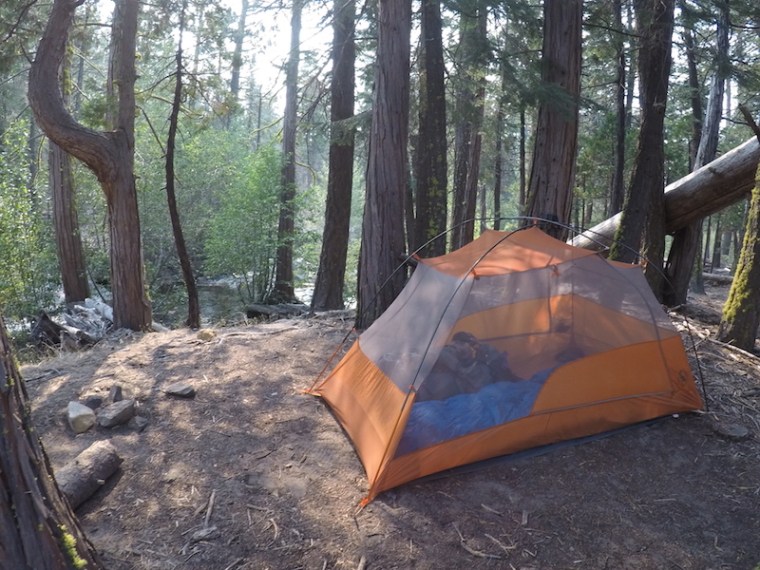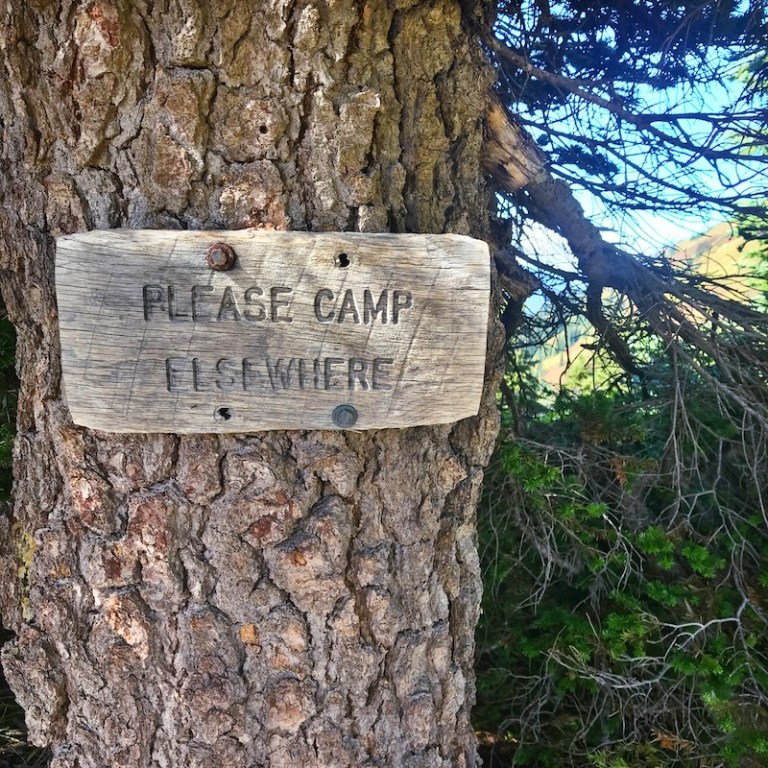
After living out of my tent on trail for the last five months, I’d like to think I know a thing or two about picking a good tentsite to camp at. I’ve spent over 100+ nights out along the PCT from California to Canada. I’ve camped at a wide variety of tentsites along the way and I’m here to tell you, life’s too short to settle for a crappy tentsite.
Why is picking a good tentsite so important along the Pacific Crest Trail? My philosophy as a thru-hiker was always if I can’t get a good night’s sleep, I won’t be able to hike and if I’m not able to hike, what the heck was I doing on the PCT? I deemed myself the “sleeping princess” with my extravagant sleeping system, which included a Therma-a-Rest Z Lite Sol Sleeping Pad, an inflatable sleeping pad, inflatable pillow, sleeping bag and a silk sleeping bag liner inside my sleeping bag. Some considered my sleeping system excessive and a bit over-the-top, but I didn’t care. It was worth carrying the extra weight for having a sleeping system that allowed me to get a good night’s sleep almost anywhere I set up camp, unless it was underneath an interstate or near active railroad tracks.
There’s an art to picking a good tentsite, trust me. The first couple of months on trail, I camped anywhere my trail family wanted to, which usually meant wherever we were when we decided to stop hiking for the day. I didn’t get good at picking good tentsites until I was in Northern California and about three months into my thru-hike. After spending over a hundred nights on trail in my tent, I started getting picky and developed a list of preferences for choosing a good tentsite. It wasn’t uncommon for me to hike a few extra miles, just to find the perfect site.
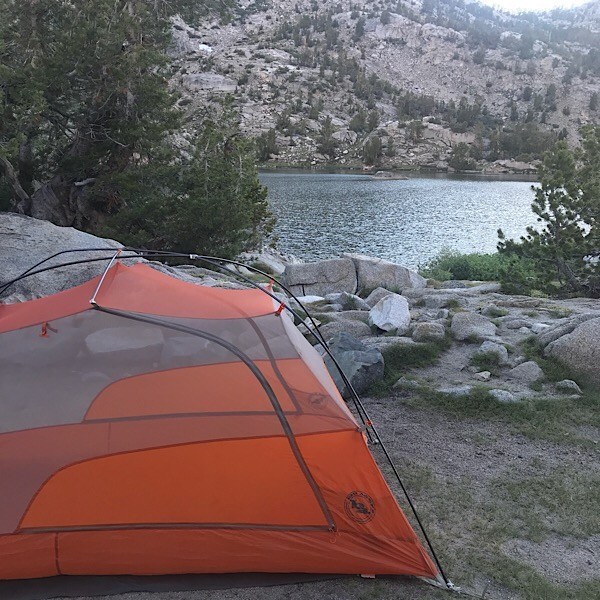
If you plan on thru-hiking the PCT, know that not every tentsite is going to be perfect, but you don’t have to settle for crappy tentsites. When you know what to look for and refuse to settle on the first tentsite that comes along, you can score a pretty decent tentsite each night on the PCT. Here’s what to look for when picking a tentsite:
LNT – Leave No Trace
First and foremost, always pick an already designated tentsite. Don’t create a new one. There are plenty of tentsites out along the PCT. You just have to find them.
The Flatter, The Better
Try to find the flattest ground possible. Avoid camping on a slope at all costs. Sleeping on a slope is incredibly uncomfortable.
In Sierra City, Grit and I set up camp behind the church in town. The only spot left where my tent would fit was on a slight slope. While setting up camp, it didn’t seem like a big deal. When I got into my sleeping bag for the evening, I realized how much of a slope my tent was on. It was extremely uncomfortable and it sucked. I ended up not sleeping well that night thanks to both my sloped tentsite and the loud mariachi music being played by the neighbors next door until three in the morning. If you find yourself in a situation where the only option you have is to set up camp on a sloped tentsite, be sure to position your head at the top of the slope so you don’t give yourself a headache while you’re trying to sleep.
Dry Camping vs Nearby Water Sources
When choosing a tentsite in the desert, we would always try to choose a site close to a water source. For me, there’s something really soothing about sleeping with the sound of running water. I also found it comforting knowing there was water nearby, should I need it. Camping near a water source is ideal for many reasons. You can filter your drinking water for the next day, the night before. You don’t have to carry extra water for drinking or cooking. You can even soak your feet and wash yourself off at the end of a hot and exhausting day. What hiker doesn’t love that option?
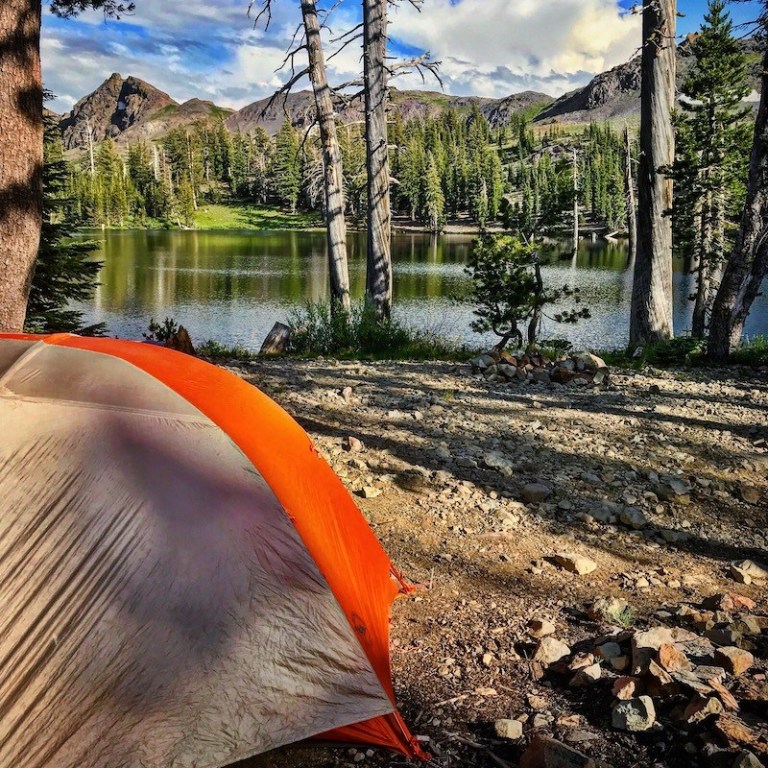
After the Sierra, my preferences for tentsites changed. I started craving ridgelines and mountain tops to camp on, as opposed to camping next to a lake, creek, spring or river. Not only for the incredible views I’d get to enjoy from the comforts of my own tent, but for privacy. One of my biggest fears of hiking the PCT when I first started was having to camp by myself. After being on trail for several hundred miles, this fear turned into something I actually enjoyed. It was nice to camp with other hikers around, but there were times when I wanted to be on my own and have some “me” time out there. More often than not, I’d have the tentsites on top of mountains and ridge lines all to myself, which was nice when I wanted space from other people on trail.
One of the challenges of camping on a ridgeline is there usually isn’t a water source nearby. “Dry Camping” is when you choose a tentsite that doesn’t have access to water. When dry camping, you’ll have to plan ahead. Make sure you pack enough water for drinking and cooking, if you opt to cook at camp. Also, look ahead to see where the next water source is after the tentsite. You’ll want to make sure you have enough drinking water to last you until you reach the next water source.
Ground Control
When choosing a tentsite, it’s important to take a look at the ground first before setting up camp. Avoid wet ground. Wet ground can lead to a wet tent, wet pack and attract bugs like mosquitoes, flies, bees and ants, all things you don’t want anywhere near your tent while you’re trying to sleep.
Avoid setting up camp on grass or in a grassy meadow. Grass tends to create condensation overnight and in the early morning and can potentially make for a damp tentsite in the morning. Typically, tentsites on grass or in a grassy meadow aren’t going to be LNT appropriate anyways so avoid these types of areas all together when choosing a site.
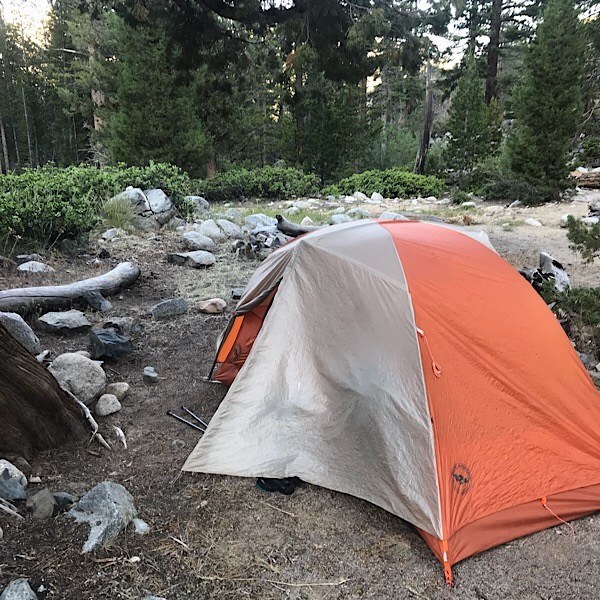
Rocks and tree roots are no bueno when it comes to choosing an ideal tentsite. For the most comfortable option, look at the ground and choose an area that’s soft and rock free. Do look for one or two big, loose rocks nearby. Rocks are a convenient tool to use when you need to hammer tent stakes into the ground. The softer the ground, the easier the tent stakes will go in.
Another thing to avoid when looking for a tentsite and setting up camp are sprinkler heads. You’ll only have to worry about these if you’re camping in a park-like area. There were a couple of places in the desert (Warner Springs Community Center and Whitewater Preserve) where we set up camp and had to be mindful of where the sprinklers were. If there are sprinklers nearby, try to find out if they’re timed and automatic. The last thing you want is to be woken up in the middle of the night or early in the morning to sprinklers hitting your tent and drenching everything in their way.
The Bigger, The More Crowded
In my experience of thru-hiking the PCT, the larger tentsites tend to draw a crowd. The bigger the tentiste, the more hikers want to camp there. If you do choose a big tentsite, don’t expect to camp there alone. This could be a great option if you’re hiking alone and want to have company at a tentsite. On my first night on the PCT, I set up camp 15 miles down the trail at Hauser Creek. The tentsite was easily big enough for 10+ tents. Since I didn’t want to spend my first night on trail alone, I saw other hikers had set up camp here and was eager to join them.
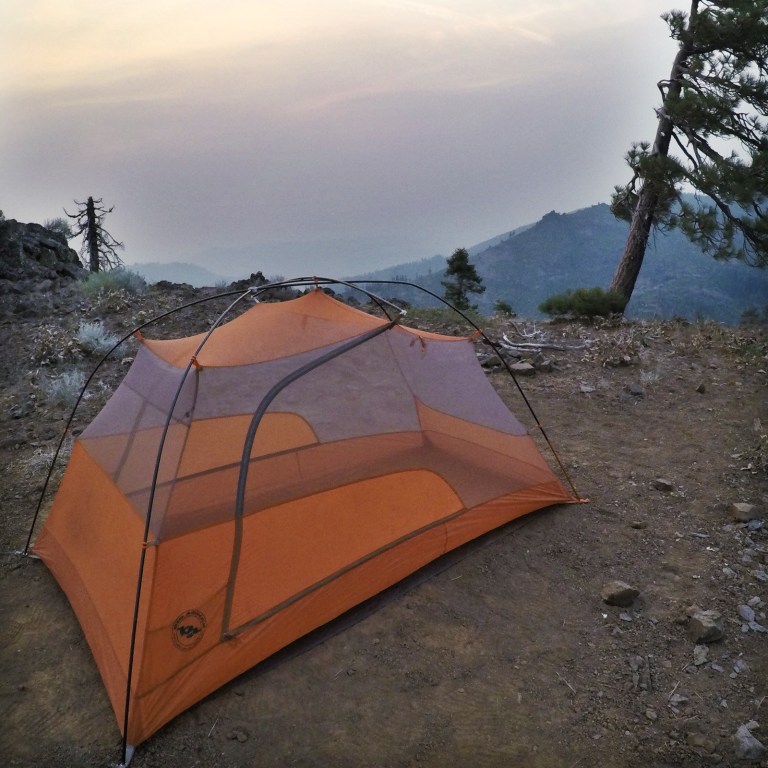
If you’re looking for more privacy and don’t want the company of other hikers, choose a smaller tentsite where there’s space for only one or two tents.
Added Bonuses
If you’re anything like me, Mother Nature comes calling first thing in the morning and sometimes in the middle of the night. When this happens, you’ll want a somewhat private and easy-to-get-to space that’s accessible from the tentsite. When choosing a tentsite, look around for potential “toilet” sites in the area. Be on the lookout for private places near bushes or trees where you can dig a cat hole and be out of the line of sight from other people when you need to handle your “business.”
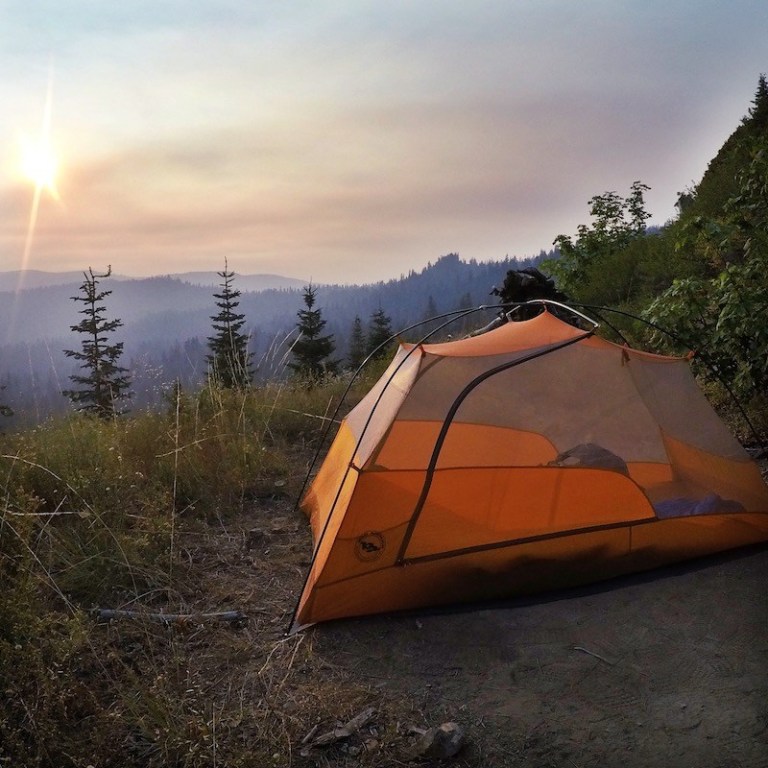
If it’s raining, look for a tentsite with tree coverage overhead. Trees and forested areas do a great job acting as a shield for your tent from the rain, helping to keep it dry. In the desert, trees and forested areas also do a great job acting as a shield from the blazing sun, helping to keep your tent cool and shaded.
Here’s to always having a good night’s sleep on the PCT!
